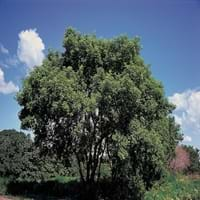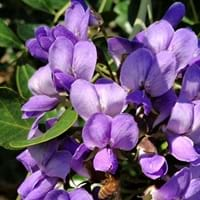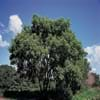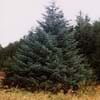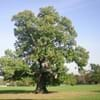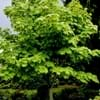Life Span
Perennial
Perennial
Origin
North America, United States, Northeastern United States, Mid-Atlantic United States, Southeastern United States, North-Central United States, Central United States, South-Central United States, Texas, Canada
Southwestern United States, Texas
Types
Ash leaves maple, Acer negundo califormicum tehachapi, Acer negundo Flamingo
Not Available
Habitat
Anthropogenic, Floodplains, Forests, Shores of rivers or lakes, Terrestrial
Arid Habitats, riparian zones
USDA Hardiness Zone
2-8
11-15
Sunset Zone
A2, A3, 1a, 1b, 2a, 2b, 3a, 3b, 4, 5, 6, 7, 8, 9, 10, 12, 13, 14, 15, 16, 17, 18, 19, 20, 21, 22, 23, 24
8, 9, 10, 11, 12, 13, 14, 15, 16, 18, 19, 20, 21, 22, 23, 24
Habit
Oval or Rounded
Upright/Erect
Flower Color
Red, Yellow green, Dark Red
Purple, Blue Violet
Flower Color Modifier
Bicolor
Bicolor
Fruit Color
Green, Tan
Brown
Leaf Color in Spring
Green, Light Green
Dark Green
Leaf Color in Summer
Green
Dark Green
Leaf Color in Fall
Yellow, Yellow green, Brown
Dark Green
Leaf Color in Winter
Not Available
Dark Green
Leaf Shape
Broadly Ovate
Pinnate
Plant Season
Spring, Fall
Spring
Sunlight
Full Sun, Partial Sun, Partial shade
Full Sun
Type of Soil
Clay, Loam, Sand
Clay, Loam, Sand
The pH of Soil
Acidic, Neutral, Alkaline
Acidic, Neutral, Alkaline
Soil Drainage
Average
Well drained
Bloom Time
Early Spring, Spring
Early Spring, Spring, Late Winter
Tolerances
Wet Site, Pollution, Drought, Soil Compaction
Drought, Salt, Soil Compaction
Where to Plant?
Ground
Ground
How to Plant?
Rooted stem cutting, Seedlings
Seedlings
Plant Maintenance
Medium
Medium
Watering Requirements
Average Water Needs, Needs watering once a week
Drought Tolerant
In Summer
Lots of watering
Lots of watering
In Spring
Moderate
Moderate
In Winter
Average Water
Average Water
Soil pH
Acidic, Neutral, Alkaline
Acidic, Neutral, Alkaline
Soil Type
Clay, Loam, Sand
Clay, Loam, Sand
Soil Drainage Capacity
Average
Well drained
Sun Exposure
Full Sun, Partial Sun, Partial shade
Full Sun
Pruning
Prune every year, Prune in early spring, Prune in late winter, Remove branches, Remove damaged leaves, Remove dead branches, Remove dead leaves, Remove dead or diseased plant parts
Remove damaged leaves, Remove dead branches, Remove dead leaves
Fertilizers
All-Purpose Liquid Fertilizer
All-Purpose Liquid Fertilizer
Pests and Diseases
Red blotch
Red blotch
Plant Tolerance
Drought, Pollution, Soil Compaction, Wet Site
Drought
Flower Petal Number
Not Available
Single
Foliage Texture
Medium
Medium
Foliage Sheen
Matte
Glossy
Attracts
Aphids, Birds, Squirrels
Butterflies
Allergy
Asthma, Runny nose, Skin irritation
Poisonous
Aesthetic Uses
Bonsai
Beautification
Beauty Benefits
Not Available
Not Available
Environmental Uses
Air purification, Shadow Tree, Wildlife
Air purification
Medicinal Uses
Antidote, Antiemetic
Not Available
Part of Plant Used
Flowers, Fruits, Leaves, Seeds
Flowers, Seeds, Wood
Other Uses
Can be made into a herbal tea, Decoration Purposes, Edible syrup, Used as essential oil, Used As Food, Used as Ornamental plant, Wood log is used in making fences
Used as Ornamental plant
Used As Indoor Plant
No
No
Used As Outdoor Plant
Yes
Yes
Garden Design
Screening / Wind Break
Feature Plant, Shade Trees
Botanical Name
ACER negundo
SOPHORA secundiflora
Common Name
Ash-Leaved Maple, Boxelder
Texas Mountain Laurel
In Hindi
Boxelder tree
Texas Mountain Laurel
In German
Boxelder Baum
Meskalbohne
In French
arbre boxelder
Calia secundiflora
In Spanish
árbol boxelder
Texas Mountain Laurel
In Greek
κουφοξυλιά δέντρο
Texas Mountain Laurel
In Portuguese
árvore Boxelder
Texas Mountain Laurel
In Polish
Boxelder drzewo
Texas Mountain Laurel
In Latin
Boxelder ligno
Texas Mountain Laurel
Phylum
Magnoliophyta
Magnoliophyta
Class
Magnoliopsida
Magnoliopsida
Family
Aceraceae
Fabaceae
Clade
Angiosperms, Eudicots, Rosids
Angiosperms, Eudicots, Rosids
Tribe
Not Available
Not Available
Subfamily
Not Available
Faboideae
Number of Species
Not Available
Importance of Boxelder and Texas Mountain Laurel
Want to have the most appropriate plant for your garden? You might want to know the importance of Boxelder and Texas Mountain Laurel. Basically, these two plants vary in many aspects. Compare Boxelder and Texas Mountain Laurel as they differ in many characteristics such as their life, care, benefits, facts, etc. Every gardener must at least have the slightest clue about the plants he wants to plant in his garden. Compare their benefits, which differ in many ways like facts and uses. The medicinal use of Boxelder is Antidote and Antiemetic whereas of Texas Mountain Laurel is Not Available. Boxelder has beauty benefits as follows: Not Available while Texas Mountain Laurel has beauty benefits as follows: Not Available.
Compare Facts of Boxelder vs Texas Mountain Laurel
How to choose the best garden plant for your garden depending upon its facts? Here garden plant comparison will help you to solve this query. Compare the facts of Boxelder vs Texas Mountain Laurel and know which one to choose. As garden plants have benefits and other uses, allergy is also a major drawback of plants for some people. Allergic reactions of Boxelder are Asthma, Runny nose and Skin irritation whereas of Texas Mountain Laurel have Poisonous respectively. Having a fruit bearing plant in your garden can be a plus point of your garden. Boxelder has no showy fruits and Texas Mountain Laurel has showy fruits. Also Boxelder is flowering and Texas Mountain Laurel is not flowering . You can compare Boxelder and Texas Mountain Laurel facts and facts of other plants too.
